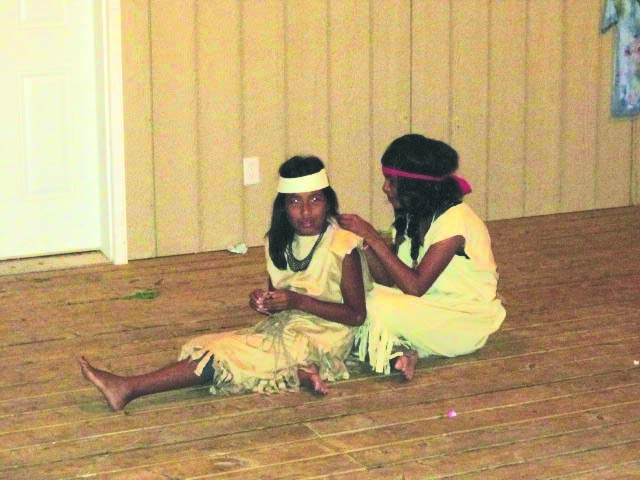Naotkamegwanning First Nation’s annual wilderness camp is, on the surface, a chance to bring youth from the community out on the land and give them the opportunity to experience the traditions of their ancestors.
Scratch a little deeper and it is so much more.
As the Treaty #3 community continues to heal from a youth suicide epidemic that 10 years ago led its chief to declare a state of emergency, the wilderness camp has become a key part of the community’s healing.
Last week 40 youth, aged eight to 16, along with Elders and other adult programmers, travelled to a camp on Black River. They spent the week fishing, singing, dancing and making traditional crafts. They heard stories and learned lessons from the Elders. And of course they spent time swimming and playing at the beach.
But the week was not just about having fun. It was not just about being exposed to traditional skills and teachings. More than anything, the wilderness camp was an opportunity to introduce the youth to their culture, to show them some of the really good things about being Anishinawbe and help them cultivate pride in themselves and their people.
Joyce White, the camp’s coordinator and Naotkamegwanning’s suicide prevention worker, knows how it is to lose a child to suicide. She also knows how it feels to be a young Anishinawbe person without pride in her culture.
White described her childhood as being “like I was an empty shell.” She said she did not know her traditions or teachings, and the result was that she was ashamed of being Anishinawbe.
“When I learned my history, when I was given an understanding of the culture, this is what helped me,” White said. “I was no longer ashamed of my brown skin, of my language and my accent, of the food I ate. That’s what I want to pass down to the children.”
To that end, the wilderness camp is just one step on a long journey. White repeatedly emphasized that the purpose of the camp is simply a chance to show the youth a way to access their culture.
“I’m helping them to understand that it is their responsibility to put themselves back to where they belong, to find their identity, and to find the beauty and richness of our culture,” White said. “We need to understand who we are and be proud of it.”
Throughout the wilderness camp, sharing circles were held to allow Elders time to speak to the youth.
One of the lessons available to the children was how to make the most of time away from all the technologies, such as video games and cell phones.
White said the cultural activies such as beading and doll-making were always used by the people to relax the mind and body while occupying time with a positive activity.
She recalled an Elder teaching her that it was her responsibility to find ways to keep herself busy to avoid boredom, and that to do that one must be creative.
“This Elder told me, as we were going to the bush for 10 days, that ‘it’s up to you. You can make it miserable for yourself, or you can make it fun for yourself,” White said.
On one evening during the week, the youth put on a play that White wrote called Anishinawbe Life. The play documented pre-contact Anishinawbe culture, moved through to contact with the Vikings and then the British, and eventually ended up in the residential school era. The campers played all the roles, and had a lot of laughs along the way, but beneath the laughter was the message for the entire camp – Anishinawbe people have a long, beautiful and rich cultural tradition, and the youth of today have inherited it from their Elders and ancestors.
The week ended with a fiddle square dance, an evening where many of the youth really opened up.
But White emphasized that a one-week long camp cannot change things on its own.
“We need to be patient with these kids,” she said. “Many of them come from so much sadness and neglect. We can’t heal people overnight, but we’re planting seeds. That’s why it has to be ongoing, and a lot more of it.”
White would like to see similar wilderness camps for women, men and all the people of Naotkamegwanning. She knows there is no way to heal youth in isolation of the rest of the community. But in the short term the challenge will be just to keep the youth wilderness camp going. The program is funded through the federal National Aboriginal Youth Suicide Prevention fund, which is set to expire in two years.
AJ White, Naotkamegwanning’s health director, said there has been a noticeable impact of having the wilderness camp on the youth. But he said the issues plauging youth in the community are still there, as is the problem of youth suicide.
“Any little thing that we can do is huge,” White said. “The camp is a big part of that.”
Gold has arrived.










Gold has arrived. Here in the north of Ontario we see vast streams of gold shimmering across the landscape as autumn is here and the the leaves are turning...
I am the product, evolution of many thousands of years as are you. I grew up on the land in the remote far north of Ontario following in the footsteps of my...